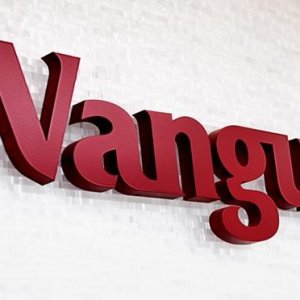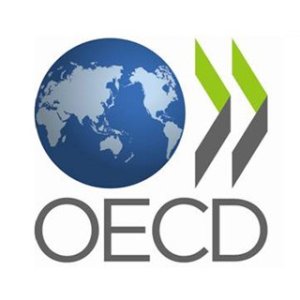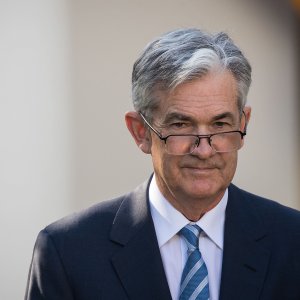The Future of Financial Services

STORY INLINE POST
The relationship between the financial services industry and its customers has always been transaction-based, whether it’s centered around checking accounts, mortgages, or investments. But how these interactions now take place — and what that means for the relationship between financial service providers and customers — is changing fundamentally.
Digitization is undoubtedly driving this evolution. But keeping pace with the changes we are currently seeing — and those we’re predicting are coming — is about more than just advancing digital offerings.
Instead, the future of financial services will be won by those brands that focus on being open, being connected, and being human-centric in their approach. Only by doing this can we ensure that, as an industry, we can meet the future needs of people and businesses, supporting better decision-making and helping to reduce the stress money can cause while maximizing opportunities for everyone.
Digitization enables this, and has become the driving force for how people interact with money and conduct their personal and professional financial lives. The impact of digitization on financial interactions is particularly relevant in addressing many of the current challenges of delivering financial services in Mexico at this juncture.
Mexico, like many emerging economies, is at a tipping point in which financial inclusion will evolve or regress depending on whether financial service providers can develop and offer secure and affordable solutions that fit into people’s day-to-day, and working, lives. Smartphone ownership and connectivity are at an all-time high, and we are still seeing the benefits of the accelerated digital finance adoption brought about by the pandemic. But it is here and now that customer-centricity is most needed. Digital banking is not just about access and connectivity; it’s about meeting people where they are, on the devices and platforms where they conduct their lives. Ultimately, it means offering up the right product or service, at the right time and in the right place.
The concept of “right product, place and time,” from Galileo’s point of view, is simple. We enable innovators of all sizes and sectors to develop and deliver services aligned to the needs, macroeconomic and social context, and infrastructure of our customers and the consumers and businesses they serve.
Open
It is here that the first part of the open concept comes into play. Progressive financial service providers need to be looking for opportunities to serve customers anywhere there is a need for people to interact with their money. This means not just waiting for customers to come to them — on their app, online, or in person — but, instead, exploring cutting-edge delivery channels, like offering embedded finance solutions to the non-financial brands their customers interact with. The advent of Web 3.0 and developments like the metaverse only accelerate this transitional need.
A second element of open concerns data. Going forward, serving customers and businesses in Mexico, fully anticipating their needs and being in the right place at the right time with the right solution, will center around data-driven insights. But it’s not just financial data. The real potential of digital finance is when you can — with consent — access a person or business’ wider data sets to see where opportunities or potential pain points lie upstream and proactively offer solutions that help. This will all be made possible by changing regulatory requirements and by customer behavior pulling businesses toward wider, responsible, secure, open data sharing.
Connected: It's a Hybrid Approach
The future also requires a hybrid approach around connectivity. Above-the-glass advances — the services and solutions offered via mobile devices and online — are very dependent on what innovation happens “below the glass,” in the infrastructure and engineering layer. You can’t do one without the other.
However, the speed of change now is so fast that staying at the vanguard of financial technology requires ongoing strategic investment. Banks frequently talk of product development cycles taking up to two years to deliver. But nimble fintechs, and tech companies in general, develop new products, or iterate existing ones, in weeks.
For banks, the way to counter this competitive challenge is to be more connected with the ecosystem. Banks are increasingly realizing they don’t have to develop all their own tech and hire all their own people. Instead, they can partner with specialist providers, like Galileo, that focus purely on creating the technology that powers the future of financial services. And that partnership can be at any level a bank needs. Perhaps they have an award-winning customer interface but are struggling with a multiproduct core solution and digitally native products built from primitives and microservices; in that case, they can just contract those bits in.
The same goes for brands venturing into the embedded finance world. Operating financial services is complex, with compliance and risk regulations to manage, as well as capital requirements and access to the “rails” needed to move money about. Again, it’s far easier to bring in experts in this space and still reap the benefits of having deeper and more enriched relationships with your customers.
The rise of Web 3.0 will have a tremendous impact on hybrid banking and fintech — and will further demonstrate the efficiency, scalability, and extensibility of being connected into the ecosystem. Blockchain, smart contracts, and tokenization will impact financial sectors, including banking, payments, lending, investing, and insurance in ways we have yet to see but you can bet there are fintechs out there already working on game-changing products and services to capitalize on those advances.
Customer-Centricity Is the Key to Building Trust
A key component of making the hybrid approach work is building and sustaining customer trust.
Personalized customer journeys are a growing norm. People rightly expect their financial service needs to be tailored to them more specifically, in the same way other digital providers deliver personalized, anticipatory services. While some of that personalization can be delivered through leveraging wider data sources, trust also is a key factor that’s crucial for customers to be comfortable sharing their data with their bank or financial service provider.
And how do you build that trust? Today, it all starts digitally. Digital-native customers demand more from their banks; they want integrated, mobile-first, advisory, DIY products and services that help them de-stress their lives. And they want it delivered with a fantastic UX and anticipation that can match that of Netflix and Spotify. Then, as you do more for customers, like helping them get their money right and be financially independent, they get comfortable with letting you do more, including letting you access the data that allows for deeper personalization and even more compelling experiences to engage with. That, in turn, drives even more actionable customer data and creates a virtuous circle.
Ultimately, it comes down to something quite simple: Putting the customer’s best interests at the heart of everything you do, and that includes being willing to “share” the customer with other operators, both within your sector and into other industry verticals.
It’s widely accepted that digitization of financial services has the potential to be a very positive thing for consumers, businesses, and society. But when we look to the future of digital financial services — in both developed and emerging markets — realizing the full potential of that digitalization will only be possible with a widespread, deeply ingrained sense of trust among consumers. Getting to that stage will require the whole ecosystem to operate in a more open, more connected, and more customer-centric way.
























